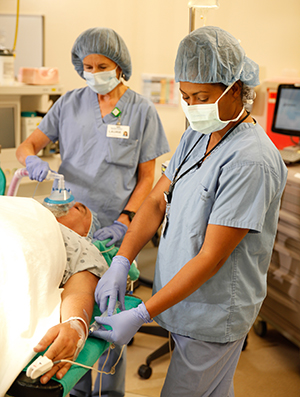Spinal Fusion
Spinal Fusion

Types of spinal fusion surgery
Which section of the spine is fused depends on where your pain is. Sections of the spine that may be fused include:
-
The neck (called cervical fusion)
-
The midback (called thoracic fusion)
-
The lower back (called lumbar fusion)
Fusion can be done from the front (anterior), side (lateral), or back (posterior) of the body. Your surgeon will suggest which method is best for you. Bone grafts used in the surgery may be from your bone, cadaver bone, or artificial materials. Your surgeon will discuss these options with you. Current research is inconclusive regarding the benefits of surgery over intensive rehabilitation programs. Your surgeon will discuss your specific case and options.
Before your surgery
You will most likely arrive at the hospital on the morning of the surgery. Be sure to follow all of your healthcare provider’s instructions on preparing for surgery.
-
Follow any directions you are given for not eating or drinking before surgery.
-
If you take a daily medicine, ask if you should still take it the morning of surgery.
-
If you are taking any blood-thinning medicines, including aspirin, make sure to discuss them with your healthcare provider at least a week in advance.
-
At the hospital, your temperature, pulse, breathing, and blood pressure will be checked. An IV (Intravenous) line will be started to provide fluids and medicines needed during surgery.
Anesthesia
At the start of your surgery, you’ll be given general anesthesia. This medicine will put you into a deep state like sleep through the surgery. An anesthesiologist is in charge of the anesthesia. He or she will meet with you before the surgery starts to talk to you and answer your questions.
After surgery
After the surgery, you’ll go to the postanesthesia care unit (PACU). You’ll stay there until you are fully awake, usually a few hours. Then you’ll go to your room. With cervical fusion, you may go home the next day. With lumbar fusion, you may stay in the hospital for 2 to 7 days. During that period, nurses and physical therapists will help you get out of bed and walk. If you have drains coming out of your wounds(s), they are usually removed before you leave the hospital.
When to call your healthcare provider
Seek immediate medical attention if you have any of these symptoms during your recovery:
-
Increased pain, redness, or drainage from the incision
-
New onset numbness, tingling, weakness, loss of bowel or bladder control
-
Fever over 100.4°F (38°C), or as advised
-
Signs of a blood clot, which can include swelling, redness, and pain in the calf
-
Chest pain or shortness of breath
Updated:
March 15, 2019
Sources:
Subacute and chronic low back pain: Surgical treatment, Up To Date
Reviewed By:
Hanrahan, John, MD,Jasmin, Luc, MD